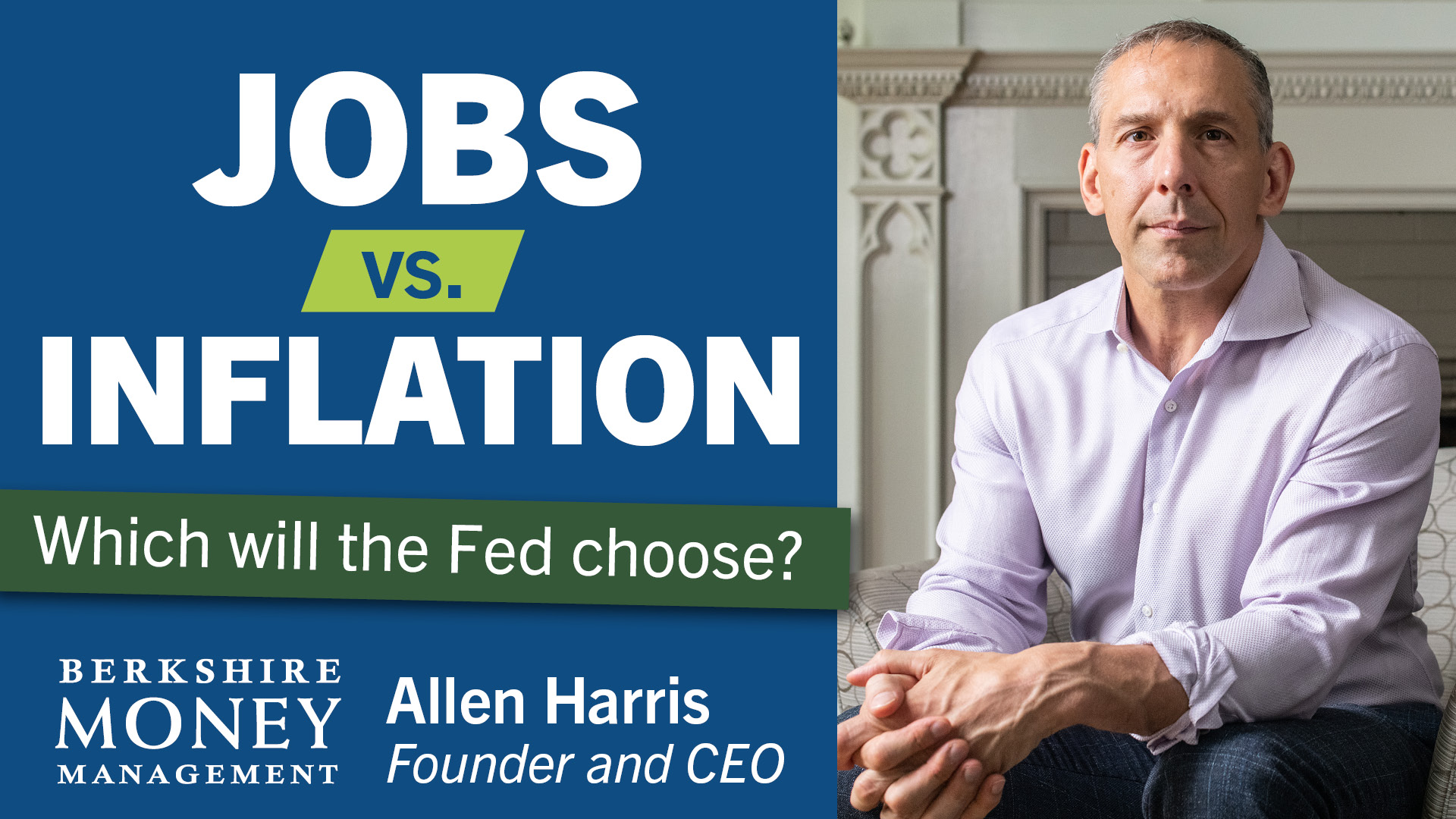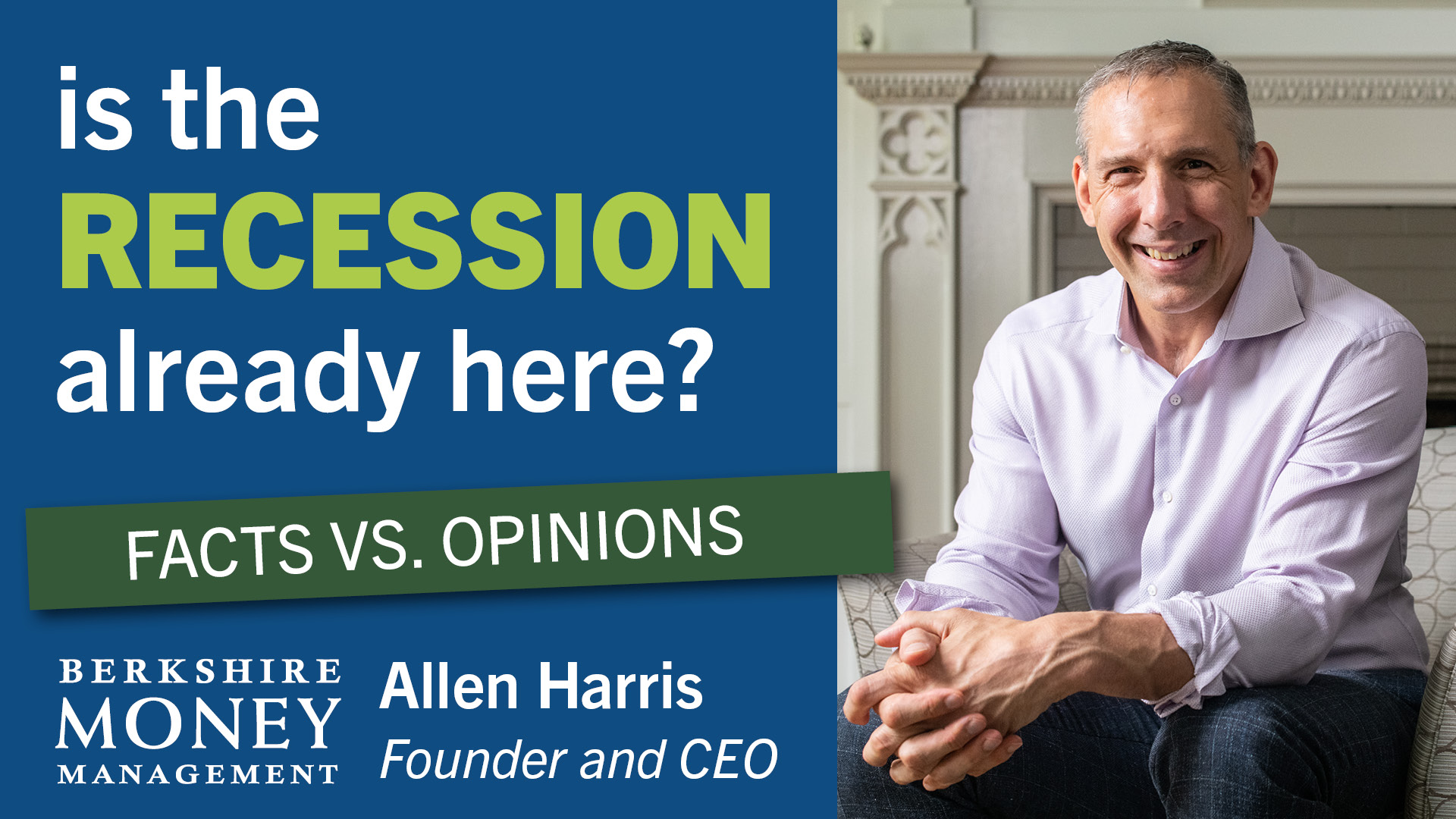Unpopular opinions in the face of a bear market

Recently I had the honor of presenting at the 36th Private Wealth Management Summit. My audience was a few hundred-ish other investment advisors. The event was described as “an invitation-only, premium summit bringing leading private wealth management investors and innovative fund managers and consultants together.”
Although I was given the role of advising other advisors, I certainly wouldn’t describe myself as “leading.” Perhaps “innovative,” if, in this case, innovative means “social pariah.”
Let me tell you the story of how Allen Harris made about 600 eyeballs roll.
It’s too late to make defensive moves in your portfolios
My presentation was titled “Taking a Deep Dive into Economic Expectations and Implications for Investors.” It was the lead panel on the first day, which made sense as it appeared to be the most crucial topic of the time. The most crucial, but apparently not the most confusing. My colleagues apparently had tremendous clarity on the fact that the economy and the stock market would free fall.
I knew the audience’s vibe, so I got it out of the way. The first thing I said to the crowd was, “my job is to make you scoff at me. Everyone is talking about how it’s time to get defensive in portfolios. That’s a six-month-old conversation. You’re too late.”
“The advice to get conservative in your investment portfolios after the market already dropped 20% is going to age horribly.”
I continued, “And let’s acknowledge this now so that you don’t think you’re hurting my feelings later. It’s the doomsayers who always sound the smartest when things look bleak. People like me, who see a path through the chaos, look naïve. None of you will think I look prudent today—you’re too bearish to be rational. The advice to get conservative in your investment portfolios after the market already dropped 20% is going to age horribly.”
I closed with, “You’re too scared. You are professionals—you shouldn’t be this emotional. It’s embarrassing to our profession.” OK, I didn’t really say that. Not out loud anyhow.
These are intelligent people. The group consisted of a former financial editor at CNN, a frequent contributor to Fox Business News, and a director of research at the Wharton School of Business. A Who’s Who list of Chief Investment Officers and Chartered Financial Analysts, including a lady who flew in from L.A. to also visit her client who “was, like, the fifth employee at Google.” And a guy who owns a tank and builds hospitals in Turkey. (That part about the tank and Turkish hospitals isn’t relevant, but it’s too interesting to have left out.) But intelligent people are not impervious to fear.
Even the most competent people in the world fall prey to the vagaries of behavioral economics—those “laws” that make us humans think with our nerves instead of using our brains to work out the investment calculus.
“Even the most competent people in the world fall prey to the vagaries of behavioral economics”
Or, of course, I could be wrong. Everyone at the conference seemed to think so.
The crime I committed was that I said the S&P 500 should be up about 10% a year from now. Not up 30%. Not even 20%. Just 10%, a bit more than its long-term average annual return.
That was enough to label me as the wildman of the conference.
One other speaker said the stock market could be flat by this time next year, as opposed to crashing further. But since I was right there when he was asked about my apparently outlandish prognostication, I think he said that out of pity. The conference discussions often turned to how wild my prediction was, as this one did.
Advisor sentiment suggests now is a good time to buy, but many aren’t reading the signs
One advisor told me his company would not touch U.S. equities for at least a year. Another told me that he’s waiting for a big event, like the 2008 Lehman Brothers collapse. There was a nearly unanimous belief that a significant recession was coming, and the stock market was on the verge of a failure. The advisors repeatedly told me that they were waiting for “capitulation.” In the investment world, capitulation is a period of intense selling, typically marked by fear more than fundamentals.
I contend that there’s been a capitulation in the sentiment of professional advisors. There is “smart money,” “dumb money,” and the madness of crowds. This level of emotional surrender seems like madness to me. And, when it comes down to it, it’s not like we financial advisors (myself included) are inhuman. People are affected by greed and fear.
One of my favorite sentiment tools is Investors Intelligence’s “U.S. Advisors Sentiment” report. The survey tracks the market views of independent investment newsletters. It reports the findings of professional investors who are bearish, bullish, or expect a correction. My first glance at the report is always the bull-bear spread (the difference between the number of bullish advisors minus bearish advisors).
The June 15, 2022 Advisors Sentiment number was -13.3% (29.4% bulls, minus 42.7% bears). Four weeks ago, the spread was -15.2%. That compares to -11.6% in April 2020 after the COVID-19 market collapse. Historically, larger negative spreads mark safer times to buy stocks.
Other times the Advisors Sentiment numbers marked buying opportunities was -4.7% in December 2018 (panic from the Federal Reserve raising interest rates too quickly) and -14.5% in February 2016 (the Chinese yuan devaluation, a collapse in petroleum prices, the Greek debt default, the end of quantitative easing, and Brexit). A more significant negative spread of -25.0%, was registered in October 2008 at the height of the Financial Crisis.
My colleagues are getting out of the stock market after a 20% drop. They say they want to see capitulation before they get back in. I say that they are the embodiment of capitulation. But the plural of anecdote is not data. The Advisors Sentiment survey supports anecdotal evidence with data—professional investors have thrown in the towel. I sense the “smart” money crowd has gotten too emotional to hold its moniker. The next few months will probably continue to suck for the stock market as we navigate mid-term elections. Still, after that, I expect to buy what my colleagues are selling.
“The only thing we have to fear is fear itself.”
– Franklin D. Roosevelt.
Although I believe that my colleagues view the world with undue pessimism, I remain aware of the term “self-fulfilling prophecy.” People are so sure that something will happen that they may end up being the reason it does. The data doesn’t support the current levels of pessimism. However, there is a chance that people and companies retrench in things like travel, hiring, buying products, and spending on corporate expansion in anticipation of the worst. Actions based on emotions can create a negative feedback loop—a self-fulfilling prophecy. I’ll watch to see if our fearful friends force the fundamentals into a free fall.
The bull market is dead. Enter the bear.
The S&P 500 is officially in a bear market as of June 13, 2022.
Recently, I reminded readers that I expected at least a “rip-your-face-off” rally from the stock market’s May 20, 2022 low. The S&P 500 index rally of 9.6% in eight trading days qualified as such. As I said in that column, “one week does not a rally necessarily make.”
On February 7, 2022, I argued that there was a six-in-ten chance that the stock market would bottom on May 22, 2022 (two days after the May 20, 2022 low). May 20, 2022, turned out to be “a” low, but it wasn’t “the” low.
By Monday, June 13, the gains from that rip-your-face-off rally evaporated as the S&P 500 traded about 1.5% lower than the May 20 low. That day’s drop broke the 20% decline threshold to push the index into an official bear market.
I had given better than 50-50 odds for a low on May 22, 2022. It is time to reassess. Now that the S&P 500 is in an official bear market, we have relied on our friends at Bespoke to look at the forward performance of the index after it breached a 20% loss.
Since World War II, there have been fourteen prior bear markets. The good news is that once the S&P 500 crosses the 20% loss threshold, the average forward returns are better than all other periods. The average six-month and one-year returns of 7.2% and 17.7%, respectively, nearly double the typical market returns.
Allen Harris is the owner of Berkshire Money Management in Dalton, MA, managing more than $700 million of investments. Unless specifically identified as original research or data gathering, some or all of the data cited is attributable to third-party sources. Unless stated otherwise, any mention of specific securities or investments is for illustrative purposes only. Adviser’s clients may or may not hold the securities discussed in their portfolios. Adviser makes no representations that any of the securities discussed have been or will be profitable. Full disclosures. Direct inquiries to Allen at AHarris@BerkshireMM.com.
This column first appeared in The Berkshire Edge on June 20, 2022.




